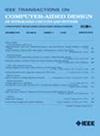EMI:可穿戴物联网设备中的能量管理与推算
IF 2.7
3区 计算机科学
Q2 COMPUTER SCIENCE, HARDWARE & ARCHITECTURE
IEEE Transactions on Computer-Aided Design of Integrated Circuits and Systems
Pub Date : 2024-11-06
DOI:10.1109/TCAD.2024.3448379
引用次数: 0
摘要
可穿戴设备和物联网(IoT)设备在健康监测、广域传感和数字农业等多个应用领域越来越受欢迎。由于电池容量有限,这些设备的能源受到限制。因此,物联网设备从环境中获取能量并对其进行管理,以延长系统的运行时间。环境能源的随机性加上电池容量小,可能导致从所有传感器获取数据的能量不足。因此,必须对传感器进行占空比或子采样,以满足能源预算。然而,用于这些应用的机器学习(ML)模型通常是在假设所有传感器的数据都可用的情况下进行训练的,这导致了准确性的损失。为了克服这一问题,我们提出了一种将数据估算与能源管理(EM)相结合的新方法。数据估算的目的是用适当的值替代缺失的数据,从而为应用处理提供完整的传感器数据,而 EM 则对设备进行能量预算决策。我们利用能源预算从尽可能多的传感器获取完整数据,并关闭其他传感器,而不是对所有传感器进行占空比循环。然后,我们对不可用的传感器采用低开销估算技术,并将其用于 ML 模型。用六个不同数据集进行的评估表明,与占空比或子采样相比,所提出的带有估算的 EM 方法在不使用额外能源的情况下,准确率提高了 25%-55% 。本文章由计算机程序翻译,如有差异,请以英文原文为准。
EMI: Energy Management Meets Imputation in Wearable IoT Devices
Wearable and Internet of Things (IoT) devices are becoming popular in several applications, such as health monitoring, wide area sensing, and digital agriculture. These devices are energy-constrained due to limited battery capacities. As such, IoT devices harvest energy from the environment and manage it to prolong operation of the system. Stochastic nature of ambient energy, coupled with small battery sizes may lead to insufficient energy for obtaining data from all sensors. As a result, sensors either have to be duty cycled or subsampled to meet the energy budget. However, machine learning (ML) models for these applications are typically trained with the assumption that data from all sensors are available, leading to loss in accuracy. To overcome this, we propose a novel approach that combines data imputation with energy management (EM). Data imputation aims to substitute missing data with appropriate values so that complete sensor data are available for application processing, while EM makes energy budget decisions on the devices. We use the energy budget to obtain complete data from as many sensors as possible and turn off other sensors instead of duty cycling all sensors. Then, we use a low-overhead imputation technique for unavailable sensors and use them in ML models. Evaluations with six diverse datasets show that the proposed EM with imputation approach achieves 25%–55% higher accuracy when compared to duty cycling or subsampling without using additional energy.
求助全文
通过发布文献求助,成功后即可免费获取论文全文。
去求助
来源期刊
CiteScore
5.60
自引率
13.80%
发文量
500
审稿时长
7 months
期刊介绍:
The purpose of this Transactions is to publish papers of interest to individuals in the area of computer-aided design of integrated circuits and systems composed of analog, digital, mixed-signal, optical, or microwave components. The aids include methods, models, algorithms, and man-machine interfaces for system-level, physical and logical design including: planning, synthesis, partitioning, modeling, simulation, layout, verification, testing, hardware-software co-design and documentation of integrated circuit and system designs of all complexities. Design tools and techniques for evaluating and designing integrated circuits and systems for metrics such as performance, power, reliability, testability, and security are a focus.

 求助内容:
求助内容: 应助结果提醒方式:
应助结果提醒方式:


